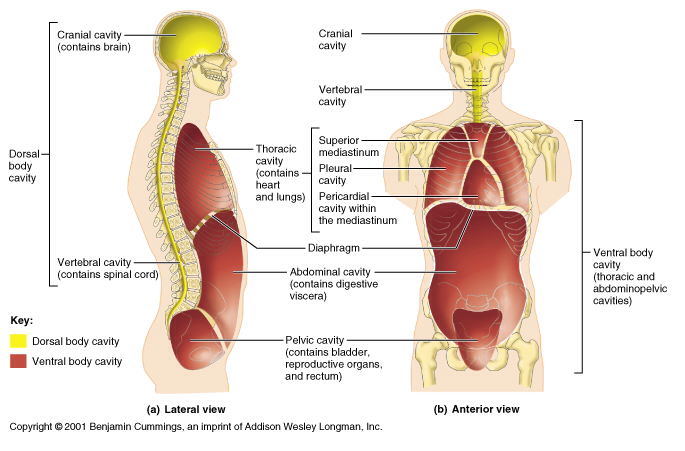Sign up for FlowVella
Sign up with FacebookAlready have an account? Sign in now
By registering you are agreeing to our
Terms of Service
Loading Flow



9. Two large cavities are within the axial portion of the body, the dorsal and ventral body cavities. They are closed to the outside and contain internal organs. The dorsal body cavity protects the fragile nervous system organs. It has two subdivisions, the cranial and vertebral, or spinal cavity. The cranial cavity is located in the skull and encloses the brain. The vertebral, or spinal cavity runs within the bony vertebral column and encloses the spinal chord. The ventral body cavity is the more larger and anterior of the cavities. It has two major subdivisions called the thoracic and the abdominopelvic cavity. The ventral body cavity holds internal organs collectively called the viscera, or visceral organs. The higher subdivision, the thoracic cavity, is surrounded by the ribs and muscles of the chest. It is further subdivided into lateral pleural cavities, each holding a lung, and the medial mediastinum. The mediastinum contains the pericardial cavity, which encloses the heart and surrounds the remaining thoracic organs (esophagus, trachea, and others). The abdominopelvic cavity is the more inferior body cavity. The diaphragm separates the thoracic cavity from the abdominopelvic cavity. The abdominopelvic cavity has two parts, the abdominal cavity and the pelvic cavity. The abdominal cavity is the superior part which contains the stomach, intestines, spleen, liver, and other organs. The pelvic cavity is the inferior portion and lies in the bony pelvis and contains the bladder, some reproductive organs, and the rectum.